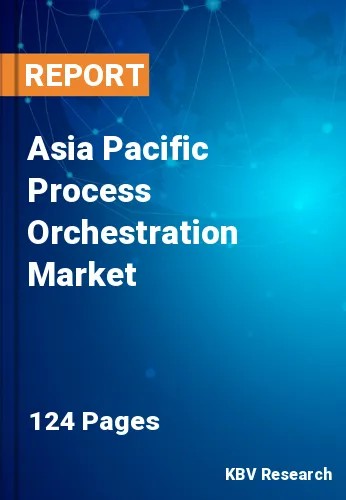The Asia Pacific Process Orchestration Market would witness market growth of 18.2% CAGR during the forecast period (2022-2028).
Even though these technologies frequently claim to help the organization achieve digital transformation, they neglect to take integrations and process orchestrations into account. In addition to providing both, process orchestration software also enables users to use machine learning and AI-based technologies while developing complex automation. Traditional automated processes may require few adjustments. Process orchestration connects various tasks, so users might be worried that altering one would have an effect on the others. Process orchestration, on the other hand, is designed to deal with these modest adjustments without disrupting the tasks that come before or after the one that needs to be changed.
As users adjust, the other automated processes can carry on as usual. The enhancement of overall accuracy and quality is one of the main advantages of process orchestration. Particularly manual data entry is prone to human errors. When working with big amounts of data, these blunders can happen completely by accident, but they can also result in expensive errors and a bad customer experience. Companies can generate more accurate outcomes that result in higher-quality products by automating their tasks and coordinating them through process orchestration.
Since 2016, India's digitalization has advanced quickly due to government initiatives, cheap mobile data, and a considerable increase in venture capital along with private equity funding. Internet and digital economy-related businesses are also becoming more recognized across Indian stock exchanges, expanding investment options and broadening the market as a whole. The government launched its flagship Digital India plan in 2016 with the goal of transforming the nation into a knowledge economy and society that is enabled by technology. The development of Aadhar, a 12-digit unique identity number based on demographic and biometric information, was one of the campaign's main foundations. With a considerable number of users, it is currently the largest biometric identity system in the world.
The China market dominated the Asia Pacific Process Orchestration Market by Country in 2021, and would continue to be a dominant market till 2028; thereby, achieving a market value of $1,041.5 million by 2028. The Japan market is estimated to grow a CAGR of 17.4% during (2022 - 2028). Additionally, The India market would experience a CAGR of 18.9% during (2022 - 2028).
Based on Component, the market is segmented into Software and Services. Based on Vertical, the market is segmented into BFSI, IT & Telecom, Manufacturing, Retail & Ecommerce, Government & Public Sector, Healthcare & Life Sciences, Transportation & Logistics, Energy & Utilities, and Others. Based on Organization size, the market is segmented into Large Enterprises and SMEs. Based on Deployment Model, the market is segmented into On-premise and Cloud. Based on countries, the market is segmented into China, Japan, India, South Korea, Singapore, Malaysia, and Rest of Asia Pacific.
Free Valuable Insights: The Worldwide Process Orchestration Market is Projected to reach USD 12.6 Billion by 2028, at a CAGR of 17.2%
The market research report covers the analysis of key stake holders of the market. Key companies profiled in the report include SAP SE, International Business Machines Corporation, Oracle Corporation, Broadcom, Inc., Cisco Systems Inc, Fujitsu Limited, TIBCO Software Inc., Software AG, HCL Technologies Ltd., and Wipro Limited.
By Component
By Vertical
By Organization size
By Deployment Model
By Country
Our team of dedicated experts can provide you with attractive expansion opportunities for your business.

